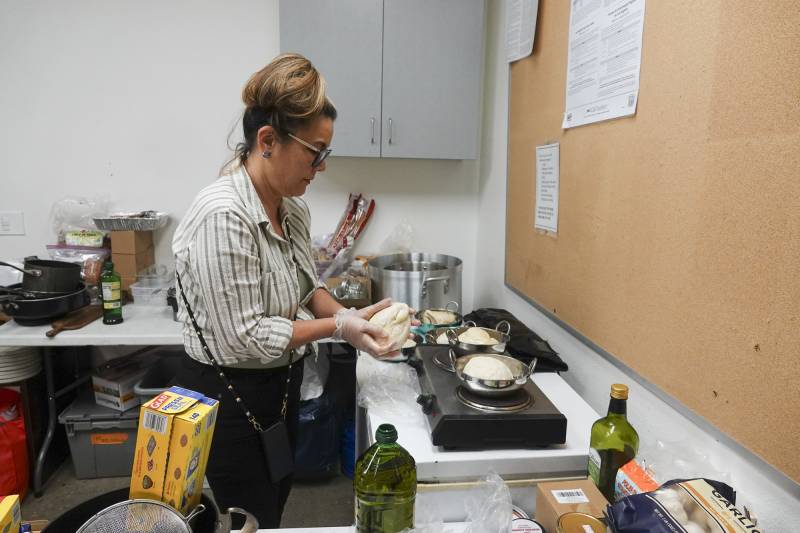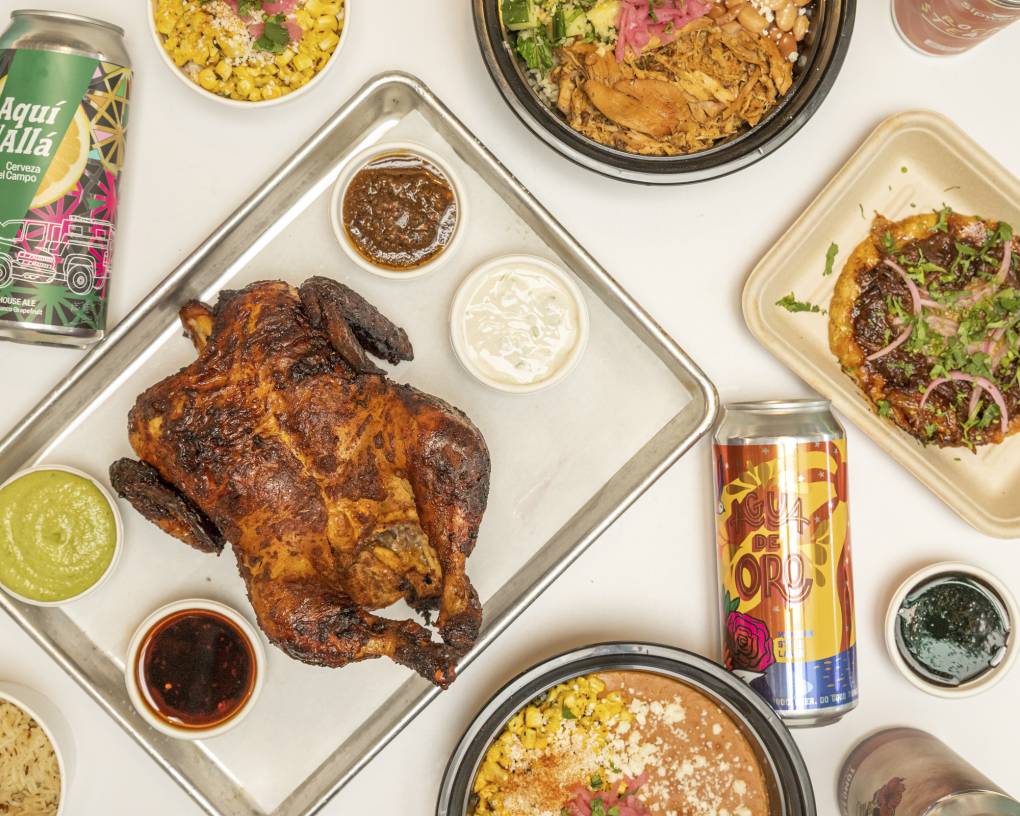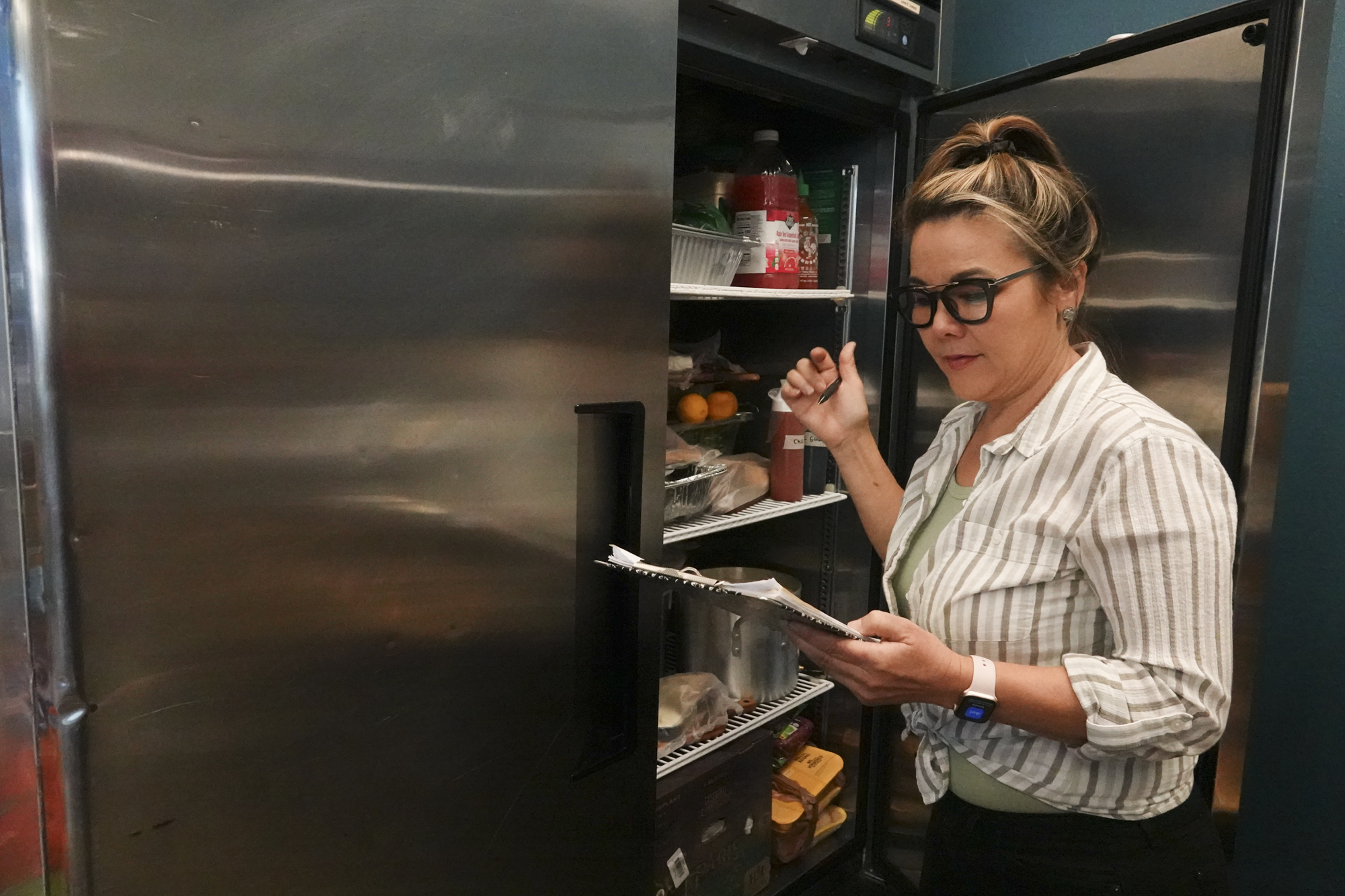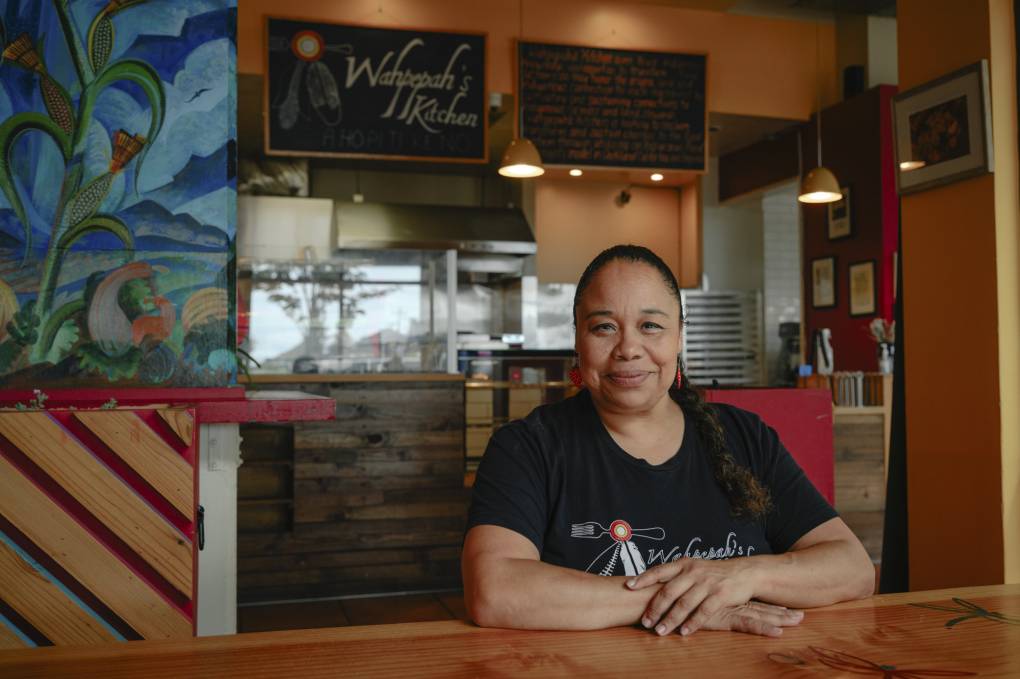Before they started filming, the space was an empty shell with ceiling insulation exposed, McSorley said. But crews built a half-dozen huge plywood boxes that each hold a completely realistic room, like an office or a den.
“So many people touched all of this before you could even think about putting food into this set,” McSorley said, with awe.
She made sure everything on the commercial kitchen set was perfect before filming began the next day when actors were expected to flip burgers and stir polenta. The set was incredibly realistic, from rubber mats covering the floor to food containers labeled with blue painter’s tape. Except, it wasn’t a real kitchen.
“One thing about a set, it doesn’t have practical lighting,” McSorley said. “Any light switches you see don’t really work.”
She had to use the flashlight on her phone to complete her inspection.
An unlikely career
Food styling is not the job McSorley thought she’d have.
She grew up in Burbank, home to many studios, but her family wasn’t involved in entertainment at all.
“My mom had office jobs,” McSorley said. “In fact, when I was little, she was a telephone operator. I don’t even think that exists anymore.”
Her stepfather owned a printing company in North Hollywood. But the entertainment industry was all around. As a girl, she remembers driving past fans lining up to watch The Tonight Show being taped.
“There was [an actors’] strike that happened when I was in high school, and it affected a lot of the families that I grew up with,” she said.
That’s when she told her family that she would never work in entertainment.
“I never wanted to work in an industry where people were so expendable,” she said. “Nobody cared how many lives these strikes could disrupt. And so, I was never, ever, ever going to be in this industry.”
Melissa was a kid with a creative streak, growing up in a structured home.
“When I was in high school, I actually wanted to go to school for photography, and my parents said that I could do that as a hobby any time I wanted,” she said.



